PROTECT YOUR DNA WITH QUANTUM TECHNOLOGY
Orgo-Life the new way to the future Advertising by AdpathwayOnce you start growing dahlias, you’ll likely be adding to the collection for years to come. Their dramatic blooms and long season make them a showpiece in the garden and a fresh bouquet.
With their diverse and nearly perfect floral forms, from highly symmetrical to informal and flared, dahlias are eye-catching. The beloved blooms offer a lasting season of color, whether as tidy pompons or towering dinnerplates. Dahlias charm in colors and sizes for every sunny garden.
With a long development time, dahlias typically flower from mid-summer until frost. Deadheading promotes faster reblooming for a second and possibly even a third round of color.
Cutting dahlias after flowering is a straightforward and rewarding task. Bask in the further flowering and buzz of pollinators with a simple snip of fading blooms.
Growing Dahlias
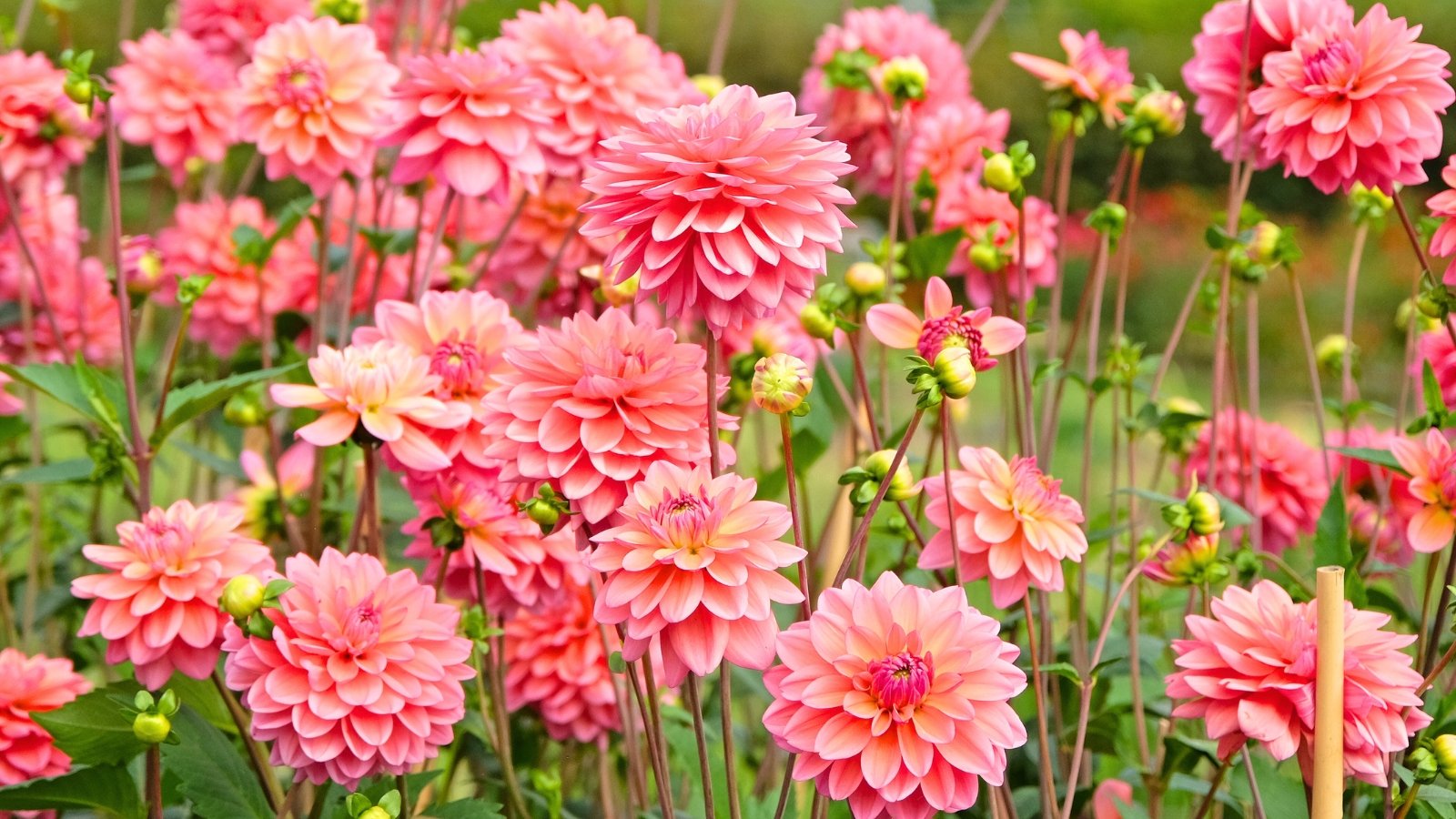 These are one of the most popular summer flowers.
These are one of the most popular summer flowers. Dahlias perennialize in USDA zones 7-10, requiring winter protection or lifting in colder climates. The stems grow from thick, fleshy tubers.
They grow quickly in a single season and perform well as annuals, especially with pre-sprouting in areas with short growing seasons. Foliage is frost-sensitive, dying back for winter dormancy to reemerge in spring (where hardy).
Dahlias prefer cool nighttime temperatures and warm days. They take about 100 days to flower from planting, and require a bit of extra care for the best vigor. One of those care tasks is deadheading.
Why You Should Deadhead Your Dahlias
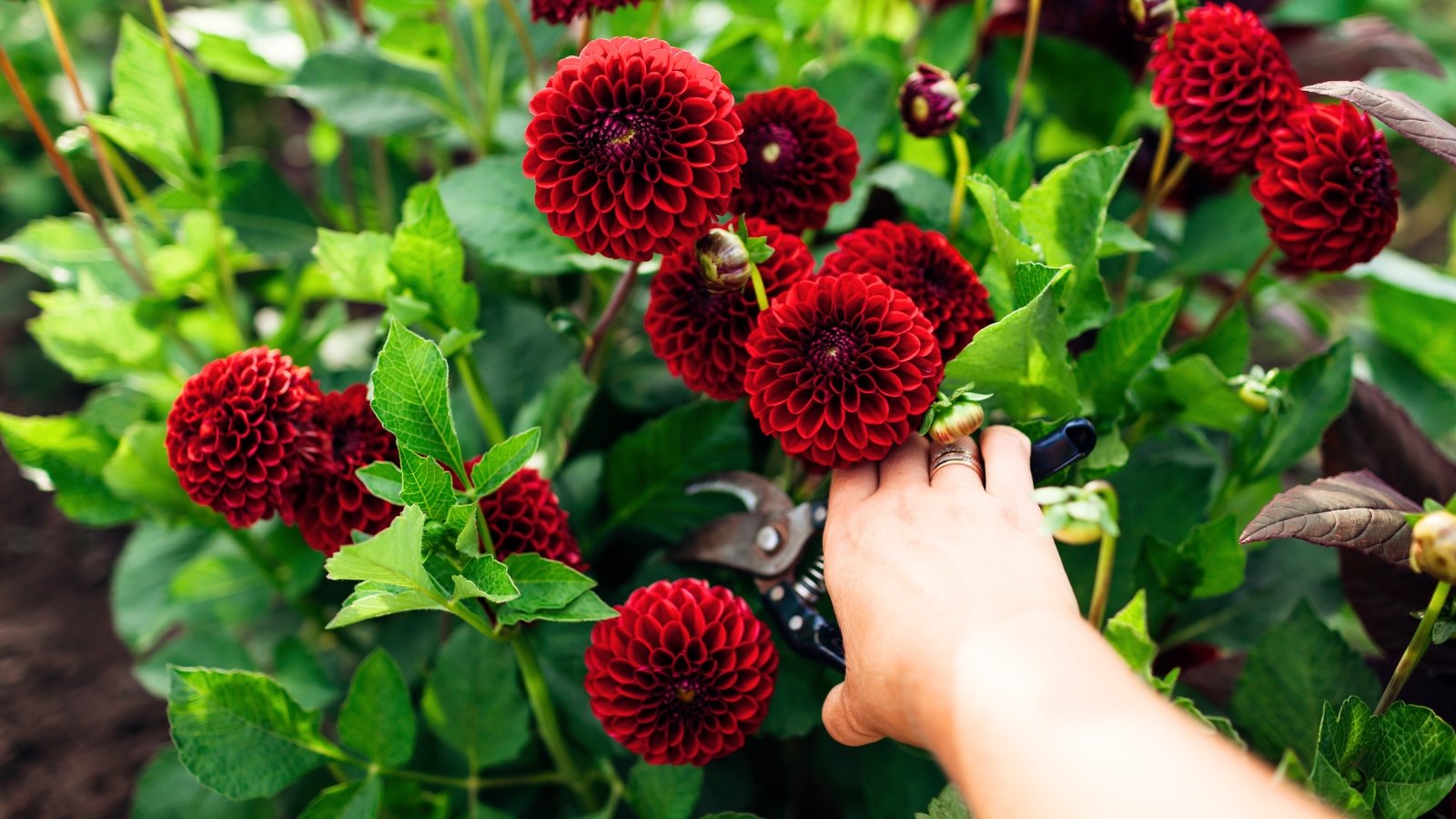 Deadheading comes with a long list of benefits.
Deadheading comes with a long list of benefits. Lots of our favorite flowering plants benefit from deadheading. While not necessary for growth, regular dahlia deadheading during the growing season promotes faster reblooming. Cutting dahlias after flowering channels energy that would go into seed production towards more flowering.
Deadheading is a practice that supports flowering, reduces diseases, and tidies the plant’s appearance. Removing spent blooms is one of the simplest ways to encourage recurrent color and foster new growth and budding.
When to Cut Dahlias After Flowering
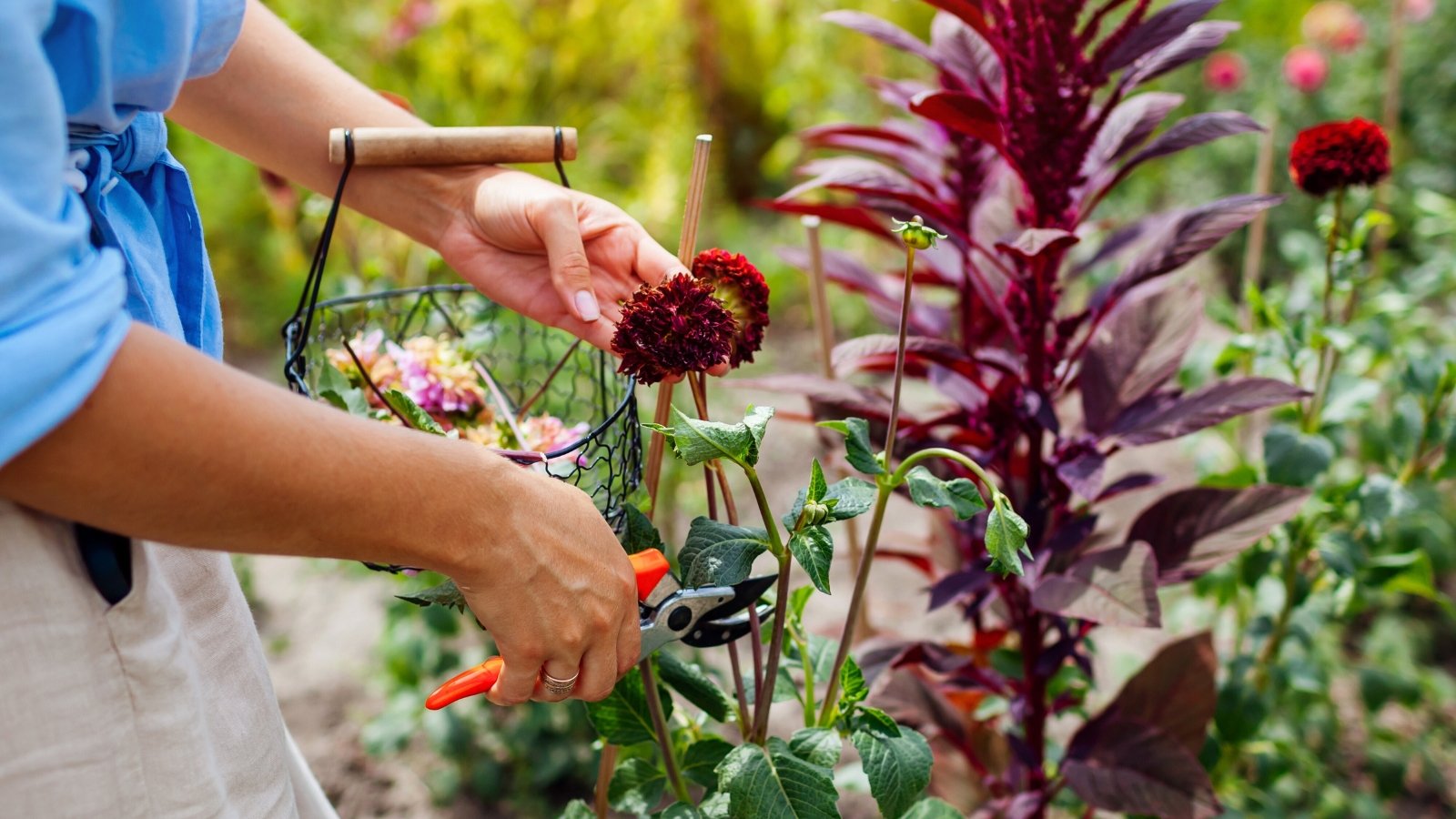 Timing is important when deadheading.
Timing is important when deadheading. Cut dahlias after flowering as petals begin to wither and fade in color. At the height of the season, a sweep with snips every few days cleans up the aged blooms and keeps fresh ones coming.
You can also harvest the stems anytime for fresh arrangements. This has the added benefit of promoting future blooms in the same way deadheading does. Clip fresh dahlias in the morning for resilient, water-filled stems. Harvest when buds are fully open (or nearly so), as they don’t continue to unfurl after picking.
When Not to Deadhead
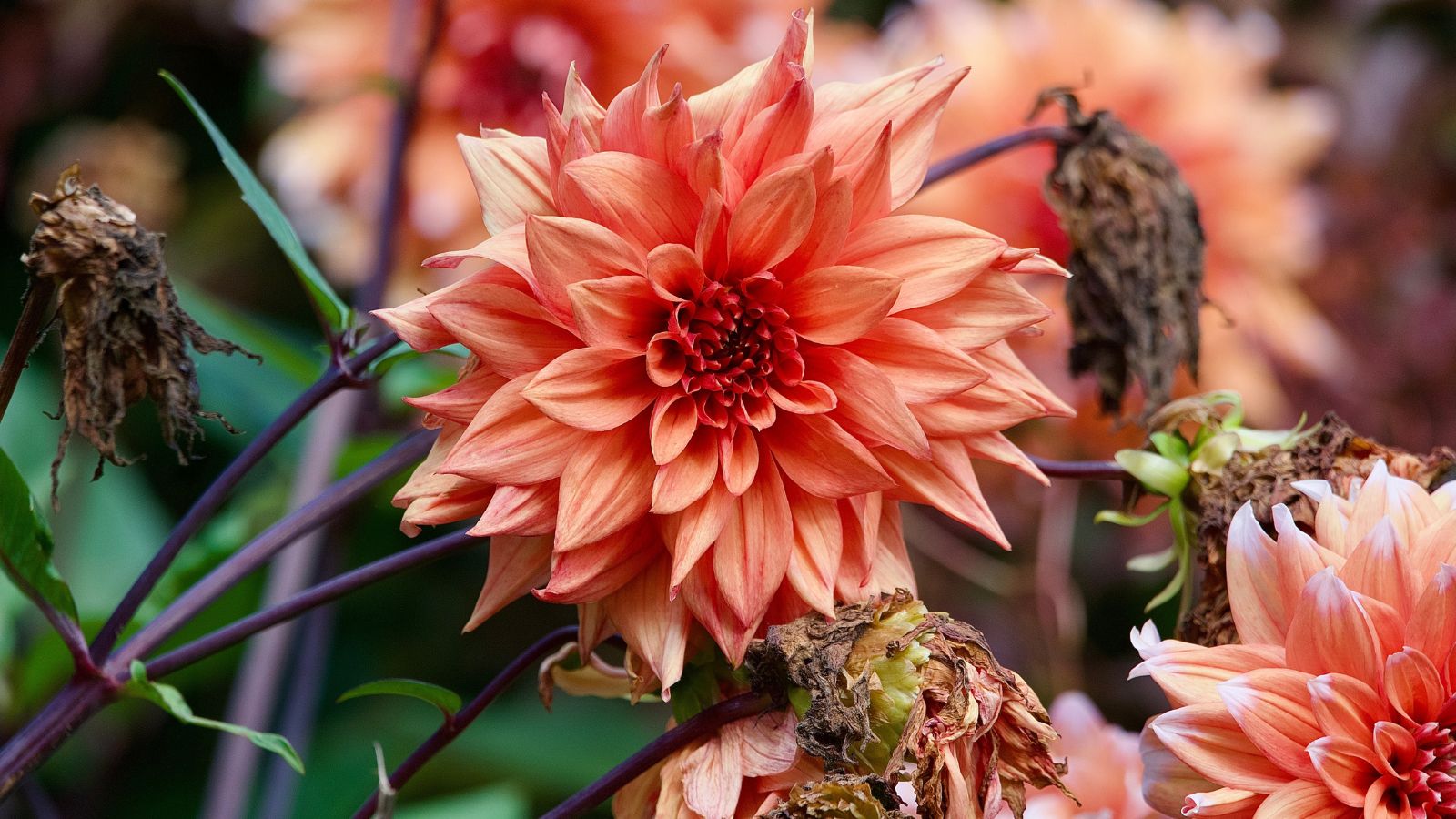 There are some occasions when deadheading isn’t needed.
There are some occasions when deadheading isn’t needed. If you hope to collect seeds or let them naturally scatter, leave some blooms on the stem at the end of the season. Hybrid dahlias don’t grow true to type from seed, meaning the offspring won’t necessarily reflect the parent plant, but it does allow for a surprise pop of color the following season.
Seeding through cross-pollination allows for a variety unique to your garden. They’re not always standouts, but if you end up loving the surprise color, protect the tubers for future seasons.
Leaving the spent blooms on the stem also provides seed for birds heading into the cool season.
How to Cut Dahlias After Flowering
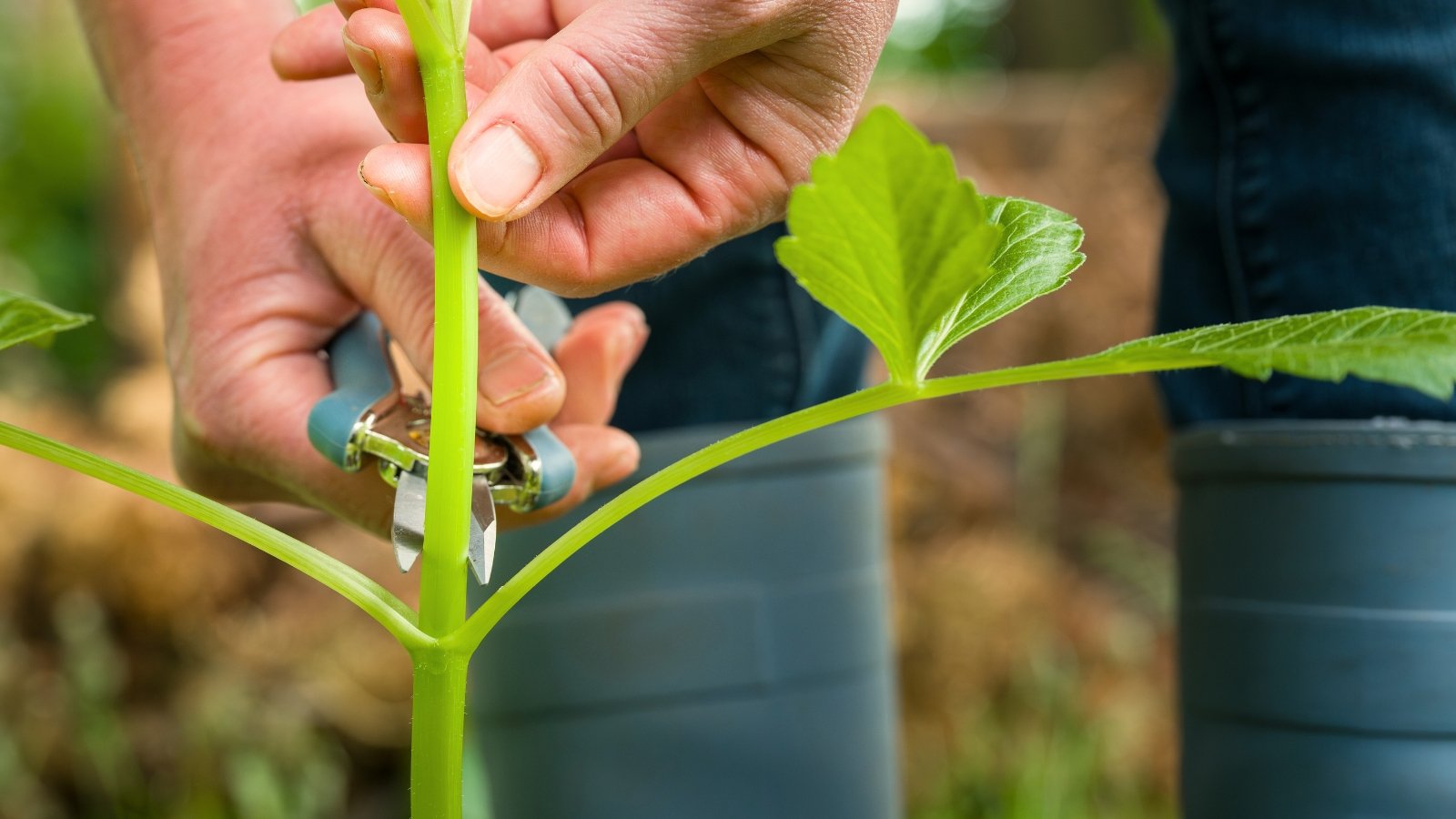 Clean your tools before you start.
Clean your tools before you start. The first step in deadheading dahlias is to make sure pruners are sharp and clean. Sharp blades prevent wounds and entry points for pests and diseases. Sanitizing the blades is key to preventing the transfer of pathogens on tools as we move between plants. An alcohol wipe, spray, or dip in a 70% isopropyl solution before pruning does the trick.
To deadhead, move from the base of the faded flower down the stem to a healthy pair of leaves, side stem, or bud. This disguises an unsightly cut stem and becomes the point where new growth generates. Cut at an angle just above the node, and you’ll see new growth within about a week.
Remove the debris and discard it to prevent the spread of fungal spores. A bonus of deadheading is improved air circulation and the reduction of dropped flowerheads that can remain damp and harbor fungal diseases.
Buds vs. Spent Blooms
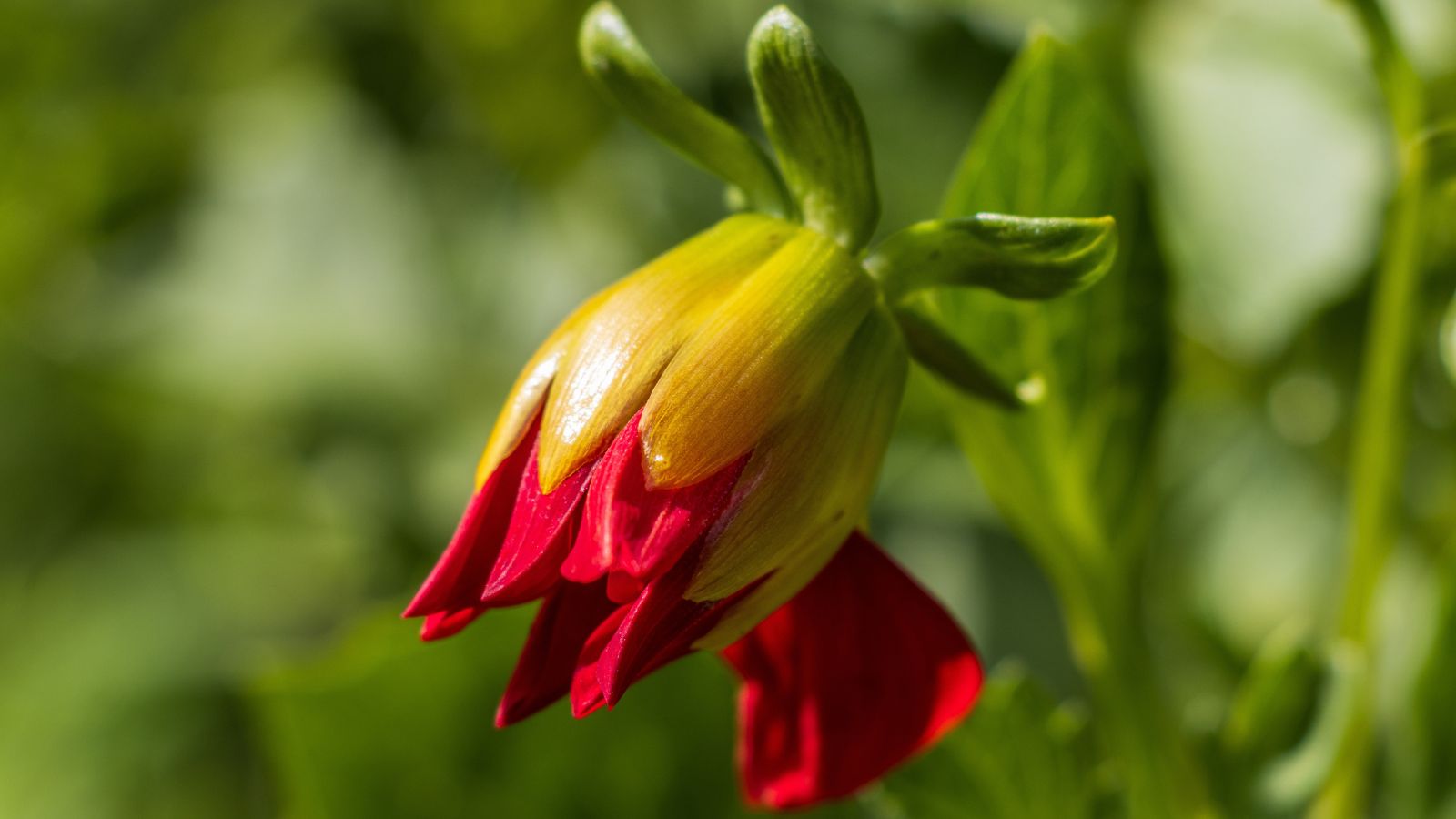 Don’t confuse spent flowers and buds when cutting.
Don’t confuse spent flowers and buds when cutting. It’s easy to spot aging petals and spent blooms to cut, but when all the petals drop, we might confuse the old buds with new buds. To know if it’s a petal-less spent bloom or a new bud, check the shape. New buds will be tightly plump and rounded. Spent ones will be more conical and pointed.
Dahlia Pruning Tips
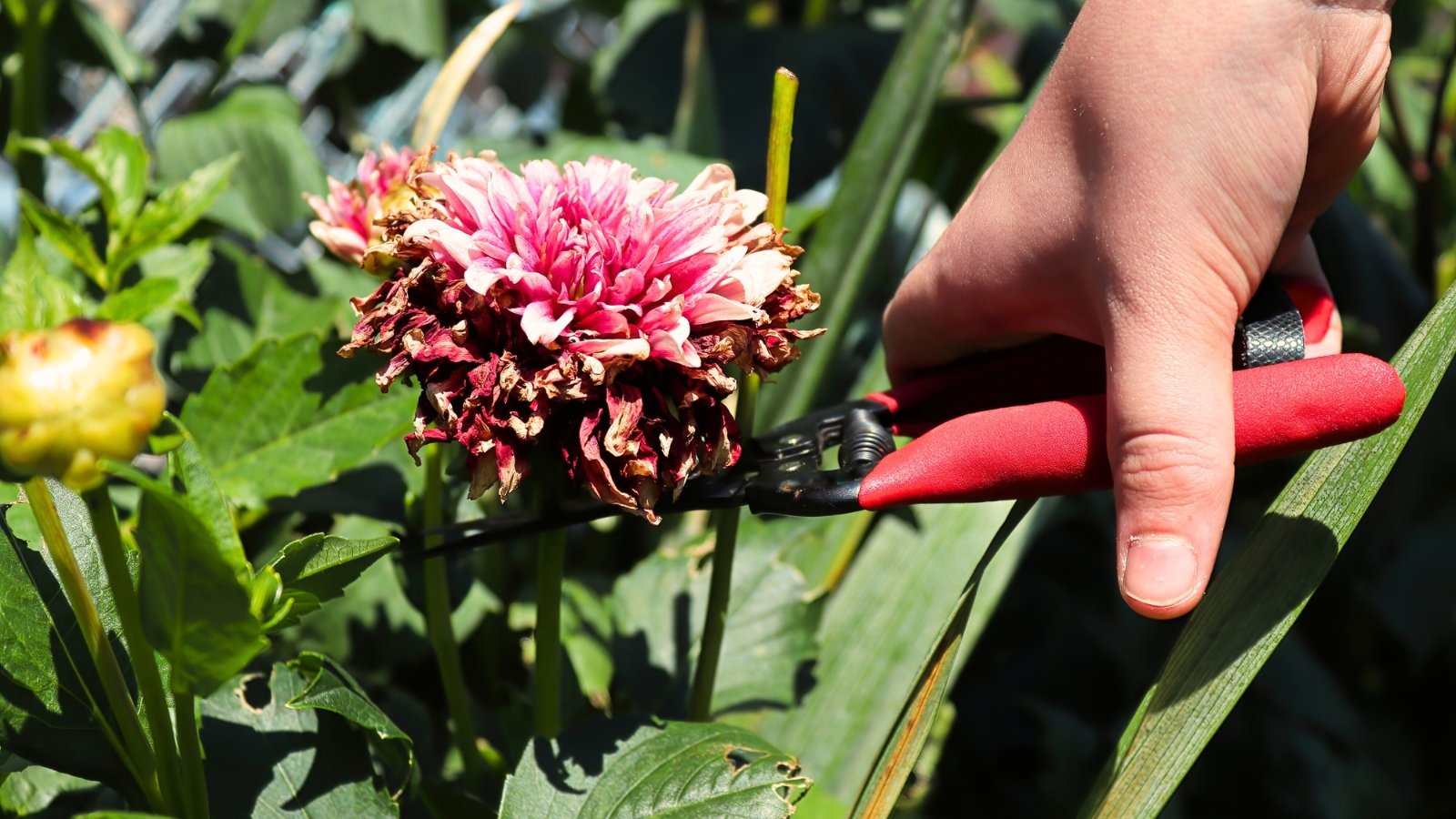 Along with deadheading, there are a few other pruning tricks to try.
Along with deadheading, there are a few other pruning tricks to try. In addition to deadheading, dahlias benefit from other light pruning that includes pinching, sometimes disbudding, and end-of-season cutback.
Pinching creates side branches with more stems to hold more buds and blooms. Pinching involves removing the growth tip from young plants to promote a bushy form with stems and a leafier habit. Pinch off the growth tip as early as one to two weeks after sprouting up until the plant reaches 12 to 18 inches tall.
Disbudding is a technique some gardeners use for display-quality blooms or cut flowers, especially in large-flowering varieties. Disbudding directs energy to the single, large buds and blooms rather than a series of less substantial ones.
To disbud, remove the side buds on each stem when they’re pea-sized, leaving the primary bud intact. Limiting the buds results in fewer blooms but a larger, singular flower. Without disbudding, you’ll have more buds and blooms ready to enjoy, even if not as prominent.
The last pruning step is the end-of-the-season clean-up. After a few frosts, stems and leaves blacken and die back, and tubers harden off. Cut off the dry foliage for a clean bed and good garden sanitation, limiting pests and spores that may overwinter in debris. Post-frost is also the time to either dig the tubers for winter storage, protect them for overwintering, or toss them into the compost pile as annuals.
Frequently Asked Questions
Deadheading is not essential for dahlias to grow and flower. They’ll bloom beautifully without removing spent flowers. But, cutting aged blooms redirects energy from seed production into creating more buds and flowers. It promotes faster reflowering during peak season and vigorous tubers.
Dahlias bloom from about mid-summer through frost, depending on the variety and climate. About once a week works well for cutting the stems after flowering, but they may be more vigorous during peak season. Clipping individual flowers every few days at the height of the bloom flush is good practice if you’ve got a thriving crop of the showy specimens. You may even get three rounds of flowers in a season.


 1 day ago
3
1 day ago
3

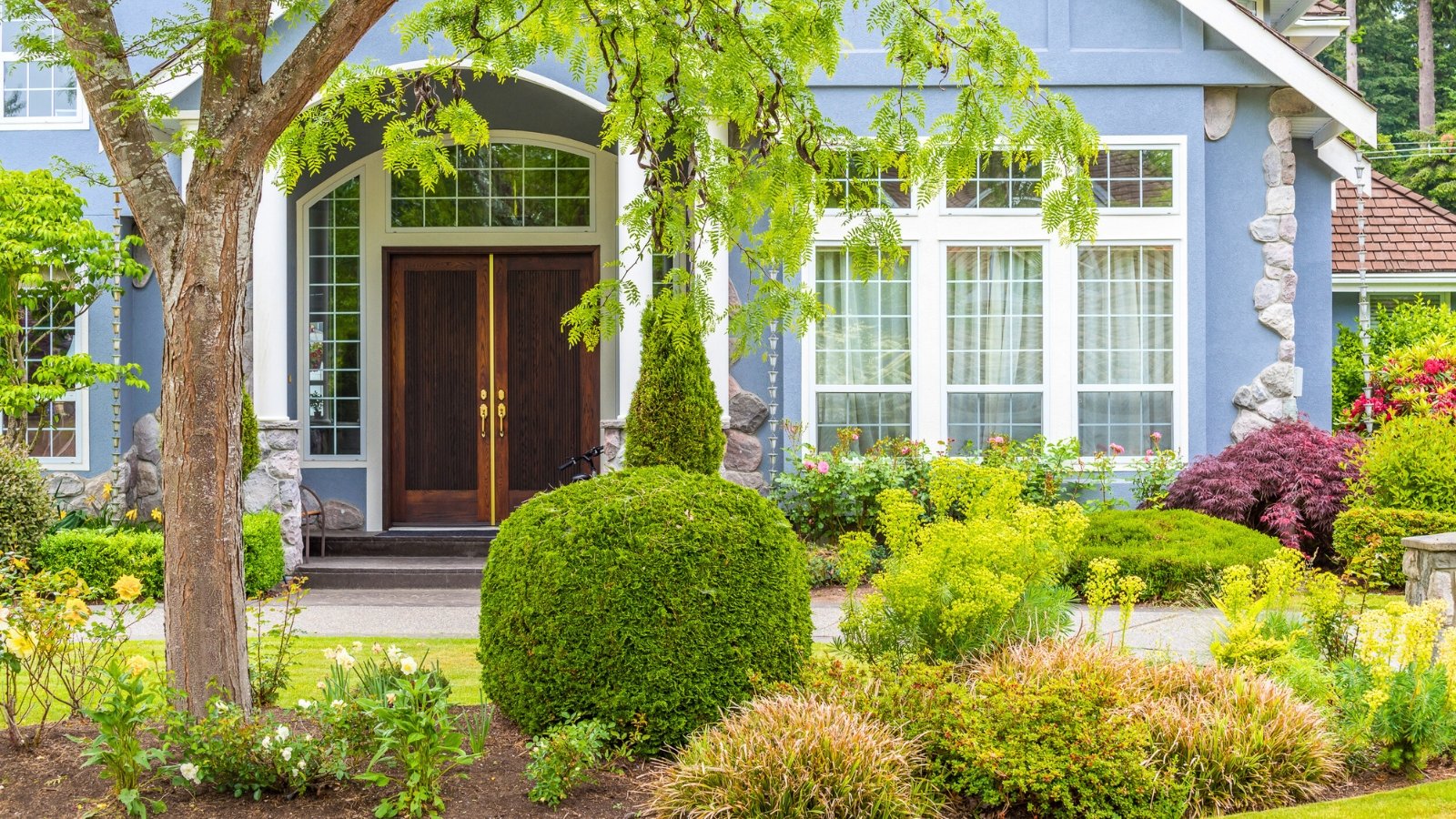
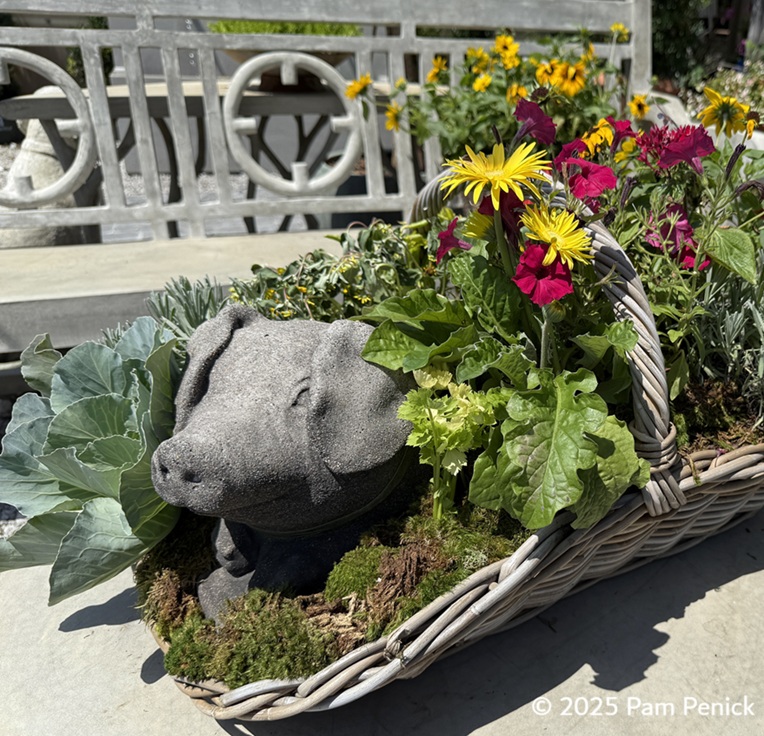


















 English (US) ·
English (US) ·  French (CA) ·
French (CA) ·